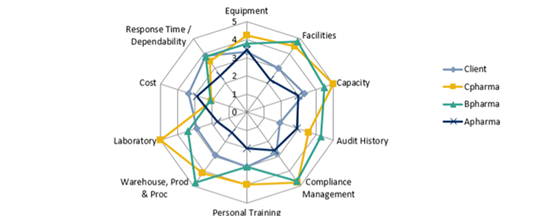November 1, 2021
November 1, 2021
A recent survey showed that 33% of the organizations surveyed use paper quality management systems; 60% use some paper and some digital; and 7% use no QMS yet. (source: Gartner peer insights)
Quality management often evolves from paper systems to an eQMS primarily because paper systems can cause a countless issues, including manual management, time consuming, costly, inaccuracies, and incompleteness. But adopting an electronic system can be overwhelming. The purpose of this blog post is to help ease your worries and help you transition from a paper system to a high-functioning eQMS.
The first question we get asked very often is, “How long will it take to migrate to an eQMS?” If you ask lots of QA people this question, you will get lots of different answers. But based on our experience, the average is 12-24 months. However, new technology now enables life science organizations to be up and running with a cloud based QMS within a matter of weeks. Pre-configured, ready to use QMS solutions enable organizations both large and small to deploy quickly and cost effectively.
We have found through hundreds of successful implementations, there are 3 easy steps to migrate from paper to digital while remaining compliant throughout the process.
Regulations require you to ensure that the tools that you use to support your regulated activities work as intended. This validation process can be lengthy and very technical if the eQMS provider doesn’t provide validation support. If validation support is not provided, you will have to hire external consultants to help. Not only is this a costly option but a time-consuming one as well. The best option is to find a provider who can help you through this process – especially when using SaaS where the provider is actually hosting your information and managing the software on your behalf.
This is the most involved stage and where things can start to drag on if you are not organized and meticulous about it. You want to make sure you have buy-in across the organization. The first order of business is to compile all records and data to be migrated to a new system. You must think ahead about documentation – are the documents you are collecting development documents or are they documents that will be used later to support regulatory submissions? This will allow you to filter and decide what things need to migrate to your eQMS and what things are not necessary. We all know how shared drives can become a mess very quickly with multiple copies and versions, so while this may be a painstaking step, it is a vital one.
Once you have identified what records will carry over to the QMS, there are few things to do next:
Once everything is organized, the migration begins by uploading your records and data to your eQMS provider.
Training is one of the most important pieces of the eQMS. People are very attached to their processes, so this step tends to get some resistance. Train all administrators and end-users on the overall process first – the why. The goal is to gain buy-in from everyone that “we need this change to do our jobs better.” Next, use the tool to facilitate working through the process.
Some training tips for ongoing success:
Here are a few tips to help you start the vendor vetting process:
Do your research: identify top vendors in the market, the technologies each vendor offers as well as standard software modules. Doing research ahead of time means you can speak with vendors confidently and gather the information you need.
Don’t overthink the request for proposal (RFP): a successful RFP process doesn’t mean you need an extensive list of features. It’s about solving a business need, addressing your pain points, and helping to differentiate vendors.
Create a shortlist and keep it short: reviewing more than three or four vendors can push out your timeline and cause undo stress. Get your team involved in creating the shortlist by conducting research and evaluating information from case studies, analysts, and peers. And don’t forget about the customer service – a strong vendor relationship goes a long way.
Control the evaluation process: ensure there is one person driving the evaluation process and that person is solely focused on getting your needs met. The focal person needs to make sure vendors don’t get in the way with flashy features –some of which may not even relate to your business.
Leave the politics out of it: whether they come from personality conflicts, prior experiences, or internal politics, avoid subjective opinions when evaluating vendors. Keep vendor rankings objective and focused on the eQMS capabilities.
ProPharma Group can help you transition from a paper-based system or a hybrid system to an eQMS. Our eQMS is provided by industry leading experts Dot Compliance and powered by SalesForce.com. Contact us today and we can get you on the path to a digital quality management system.
TAGS: Life Science Consulting
August 3, 2021
It's no secret. To be successful in the life sciences industry you must accomplish a lot – achieve and maintain profitable growth, deliver safe and effective products to patients quickly, manage...

November 23, 2021
There are many ways in which you can evaluate a Contract Manufacturing Organization (CMO) to identify the best fit for your company’s needs. Every company knows, timing is critical to success. But...
March 10, 2022
We live in a world of measurement and metrics. Running a successful business requires a thorough analysis on the work, sales, and financial results. Of course, identifying and tracking business...